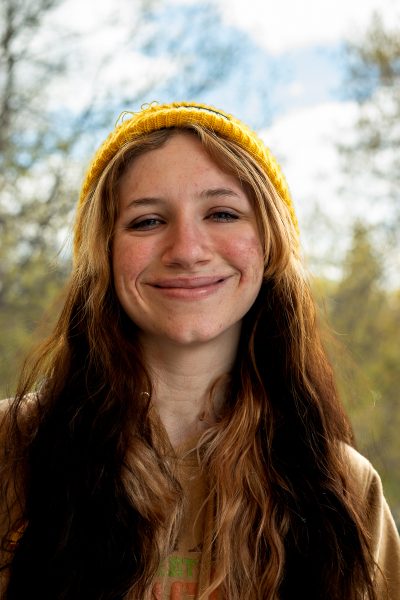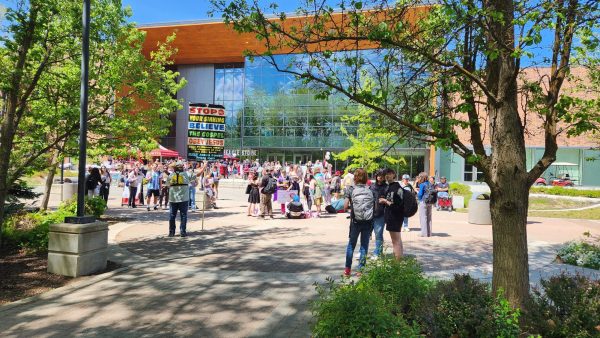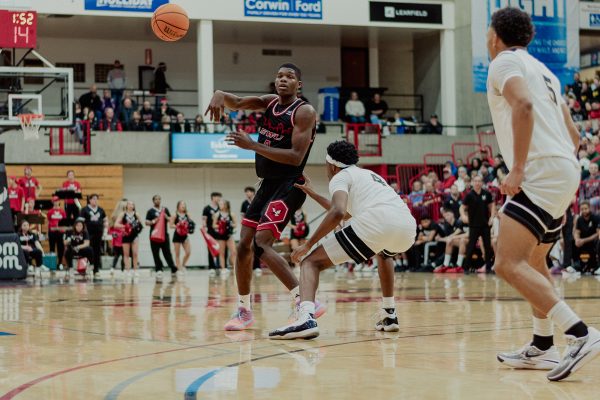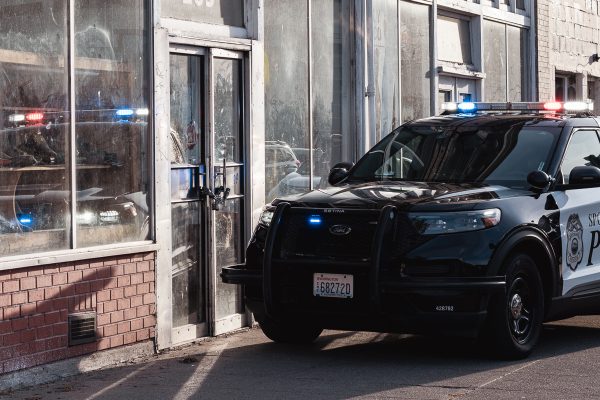Riding for the culture
Scott Abrahamson rides bareback in an Indian relay race. Abrahamson started a racing team with his uncle shortly after his dad passed away.
February 13, 2019
When most people hear the word rodeo, an image of modern day cowboys glued to bucking bulls and stallions is the first thing that comes to mind. For teams of Native Americans competing in Indian relay races, the rodeo is an opportunity to continue traditions and preserve family pride.
The Indian relay race consists of teams made up of riders and horse handlers. The riders go for three laps around a track before leaping onto the back of another horse for another three laps. Handlers guide the horses during the transitioning period.
Every rider rides the horses bareback, following traditions among native peoples. Team’s sport colors that have been passed down to represent their families for generations.
EWU engineering student Scott Abrahamson grew up around “horse people” on the Colville Indian Reservation. His grandfather and father both raced horses and had him riding at an early age.
Abrahamson said he had stopped riding for a long time, until his dad passed away when he was in middle school.
“I felt like I had to carry it on,” Abrahamson said. “That persuaded me to start riding again and it took off from there.”
Abrahamson’s uncle, Jonathan Abrahamson, took him in and they created a racing team. As a team they travel across the country competing in a range of rodeos in the Pacific Northwest and Midwest. They have traveled as far as Florida to race in the event, regularly taking first place.
The Abrahamson’s won a little over $12,000 during a race at the Emerald Downs Racetrack and Casino in Auburn, last year. The winnings they receive go into their horses, for training and housing costs, as well as purchasing new ones.
“We’re not doing it for money,” Scott Abrahamson said. “We’re hoping to break even throughout the whole year. It’s kind of for fun and it’s what we do.”
One part of the Indian relay races that separate them from other rodeo events is riding the horses bareback. Scott Abrahamson said that people come up to him at the rodeos and wonder how he is able to ride a horse that way.
“We have been doing it all of our lives,” Scott Abrahamson said. “That’s just part of who we are.”
There is a rite of passage aspect that comes with riding horses and competing in the races. Successful riders are often looked up to by the younger children in the community.
“Native Americans are known for being horse people,” Scott Abrahamson said. “It made me want to come back to racing. It’s not all about winning, my little cousin looks up to all these racers and I like to set an example for him.”
Jonathan Abrahamson said that Scott Abrahamson is the perfect role model for his 11-year-old son. He said that plenty of people around Omak are good riders, but that Scott Abrahamson being in college is the thing he’s most proud of.
“(Scott) is everything to him,” Jonathan Abrahamson said about his son looking up to Scott Abrahamson. “He’s a good student and really respectable. A lot of us are good riders, but not all of us got the high GPA he has had while in school.”
The Abrahamson’s sport the colors purple and white that have been passed down since Scott Abrahamson’s great-great grandfather. Jonathan Abrahamson said that they dress in traditional regalia and before each race they burn sage and smudge it on themselves and their horses and say a prayer to keep them safe during the race.
“There’s a lot of pride that goes into it,” Scott Abrahamson said. “Coming up nobody really knew us, and now we’re a team to be reckoned with.”
Abrahamson also competes in the Omak Stampede Suicide Race, that takes place on top of a hill that is 225 feet long and has a 62 percent slope. Riders race straight down the hill and cross the Okanogan River.
Some animal rights groups have criticized the event because 23 horses have died in the event over the last 25 years, but only one horse has died since 2005 and the event has been a staple in the community since 1935.
Abrahamson said there is extensive safety precautions that go into making sure the horses are in capable shape to complete the course.
“Everyone thinks it’s a crazy deal,” Jonathan Abrahamson said. “But it’s normal to us because we grow up around it. When you win that race you’re looked up to.”
Riley Prescott has competed with and against Scott Abrahamson in Indian relays, and also participates in the Omak Stampede. He said since he was little he told his mom that he would be coming down that hill one day and she would always laugh it off. He didn’t let that stop him. Prescott and his brothers have all competed in the Suicide Race.
“It was a big rush,” Prescott said of the first time he did the stampede. “It all happened in the blink of an eye.”
Prescott said that as the years have passed it has become easier to navigate the traffic on the hill. He said that when he races against Scott Abrahamson in relays one of them usually wins and it comes down to whoever messes up first.
Scott Abrahamson has won the Suicide Race each of the last four years. His uncle and father won the race when they were young.
The 2019 Suicide Race will be on Aug. 9. The Abrahamsons will be competing at rodeos across the country throughout the summer and into the fall.




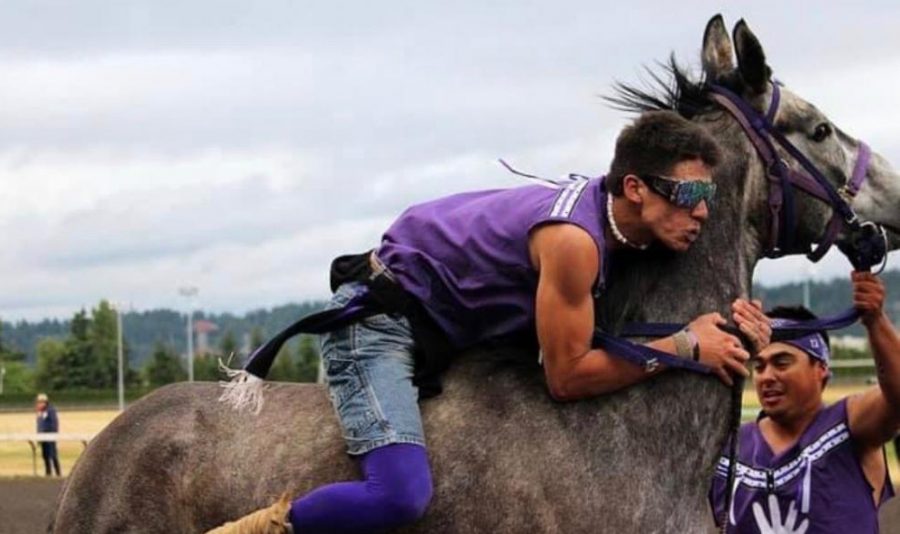
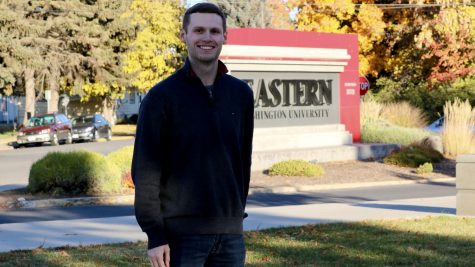


![Simmons said the biggest reasons for her success this year were “God, hard work, and trusting [her] coach and what she has planned.”](https://theeasterner.org/wp-content/uploads/2024/05/image1-1-1200x800.jpg)

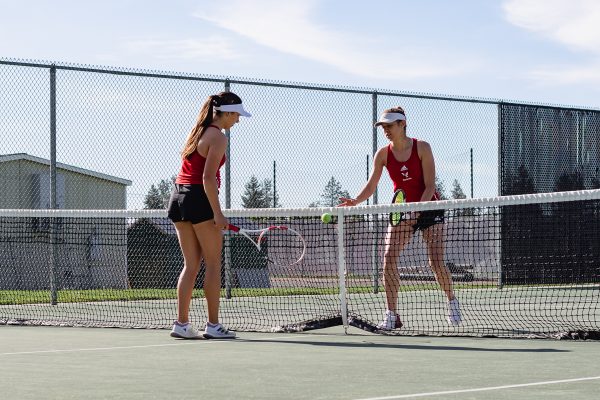
![Simmons said the biggest reasons for her success this year were “God, hard work, and trusting [her] coach and what she has planned.”](https://theeasterner.org/wp-content/uploads/2024/05/image1-1-600x400.jpg)

